Mark Caney's Blog, page 19
January 15, 2015
Culture war in the deep blue sea: Science’s contentious quest to understand whales and dolphins
Excerpted from “The Cultural Lives of Whales and Dolphins.”
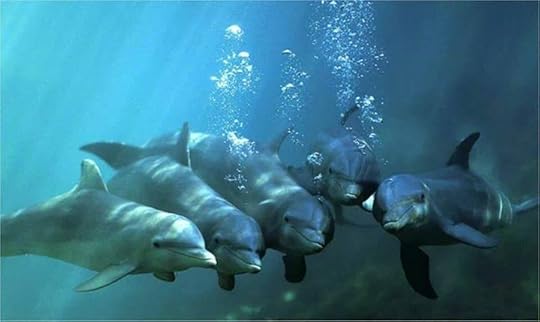 The idea that culture is important for nonhumans, including whales, has a history of controversy. In the 1930s–40s, biology was given a strong theoretical basis in the form of evolution through natural selection—natural selection as first suggested by Charles Darwin and Alfred Russel Wallace and then formalized with genes as the units of selection in the modern synthesis. The modern synthesis was not particularly about behavior, but behavioral theorists in and around the 1970s realized it could be applied to behavior as well as morphological, physiological, or anatomical features. This new field was called behavioral ecology or, largely in the United States, sociobiology. Advocated comprehensively in E. O. Wilson’s book “Sociobiology” and summarized eloquently by Richard Dawkins in “The Selfish Gene,” behavioral ecology made a fine job of explaining why animals do what they do. Its application to human behavior was, and is, controversial. For the study of nonhuman behavior, however, behavioral ecology became a hugely successful scientific paradigm. From the 1980s onward, scientific papers describing the behavior of animals invariably started and ended with how the research was situated within the theory of behavioral ecology. We, and most of our scientific colleagues, found the theory very appealing and felt it well explained the behavior of animals. In the field of animal behavior, behavioral ecology became “normal science,” in the terminology of the philosopher of science, Thomas Kuhn. Suggesting that culture could be a major driver of the behavior of nonhumans challenges this paradigm— making it “revolutionary science,” according to Kuhn—and, as with other challenges, was resisted. However, in contrast to the opposition facing most other scientific revolutions, the attacks are not coming from the stalwarts of “normal science.” Since the inception of their theory, behavioral ecologists and sociobiologists have largely accepted the possibility that culture might have an important role in determining behavior, along with genes.
The idea that culture is important for nonhumans, including whales, has a history of controversy. In the 1930s–40s, biology was given a strong theoretical basis in the form of evolution through natural selection—natural selection as first suggested by Charles Darwin and Alfred Russel Wallace and then formalized with genes as the units of selection in the modern synthesis. The modern synthesis was not particularly about behavior, but behavioral theorists in and around the 1970s realized it could be applied to behavior as well as morphological, physiological, or anatomical features. This new field was called behavioral ecology or, largely in the United States, sociobiology. Advocated comprehensively in E. O. Wilson’s book “Sociobiology” and summarized eloquently by Richard Dawkins in “The Selfish Gene,” behavioral ecology made a fine job of explaining why animals do what they do. Its application to human behavior was, and is, controversial. For the study of nonhuman behavior, however, behavioral ecology became a hugely successful scientific paradigm. From the 1980s onward, scientific papers describing the behavior of animals invariably started and ended with how the research was situated within the theory of behavioral ecology. We, and most of our scientific colleagues, found the theory very appealing and felt it well explained the behavior of animals. In the field of animal behavior, behavioral ecology became “normal science,” in the terminology of the philosopher of science, Thomas Kuhn. Suggesting that culture could be a major driver of the behavior of nonhumans challenges this paradigm— making it “revolutionary science,” according to Kuhn—and, as with other challenges, was resisted. However, in contrast to the opposition facing most other scientific revolutions, the attacks are not coming from the stalwarts of “normal science.” Since the inception of their theory, behavioral ecologists and sociobiologists have largely accepted the possibility that culture might have an important role in determining behavior, along with genes.
E. O. Wilson, for instance, cowrote “Genes, Minds and Culture: The Coevolutionary Process” and Richard Dawkins coined the term “meme,” the cultural analog of the gene.
This is not to say that proposing culture as an explanation for animal behavior does not meet resistance from our closest colleagues, but it does so only from the angle of questioning what the evidence is that a particular behavior results from some kind of social information. There are now, however, enough solidly demonstrated examples that this does in fact happen in many species for the study of social learning to be accepted as a valid and growing field within mainstream animal behavior science. No, while behavioral ecologists may question the evidence and suggest alternative explanations, they are generally not appalled by the very notion of chimpanzee or whale culture. The fiercest critics come mostly from anthropology and psychology. Here, it is the very concept of animal culture that is anathema, not the nature of the evidence. It is part of the paradigm in most of the social sciences, insofar as the social sciences have paradigms, that humans are unique in having culture or, at least, in being overwhelmingly cultured. Culture in other species, if it exists, is an epiphenomenon, not terribly important. It is the challenge to this paradigm that is being resisted.
Critics of all stripes argue against the evidence put forward. They pick away at the (necessarily) spotty evidence from field studies, suggesting that this or that pattern of behavior could have arisen genetically or through environmental correlations. In their laboratory experiments, chimpanzees don’t imitate and rats don’t teach—thus: no culture. On the other side of the debate, field scientists are convinced that culture is a major part of the lives of the animals that they study, but how can they show it?
People have thought about nonhumans having culture for a long time. Aristotle noted that at least some birdsong was learned. Darwin thought many animals possessed “inherited habits,” and although he did not know how inheritance worked, his conception of these inherited habits was very similar to what we now think of as culture. Following Darwin, many of those who studied the behavior of animals in the late nineteenth and early twentieth centuries believed that socially learned traditions were important in shaping the behavior of at least birds and mammals. However, once genes had become central to biology in the modern synthesis, thoughts that culture might have a role in animals other than humans faded. For a while it was nearly all about genes.
Full article: Salon
January 14, 2015
Floating Marine Debris Can Be Deadly for Dolphins
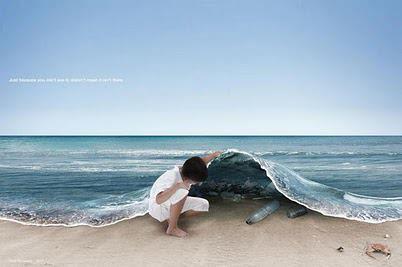 Thanks to increased awareness about the environment, most people know that tossing garbage into the ocean is just wrong. Unfortunately, plastic marine debris is still common, and deadly to marine mammals such as dolphins and whales. If you needed another reason to stop throwing your garbage into the ocean, this news from the Marine Pollution Bulletin might make you think twice: in 2014, 56 percent of whales, dolphins and porpoises swallowed a piece of plastic.
Thanks to increased awareness about the environment, most people know that tossing garbage into the ocean is just wrong. Unfortunately, plastic marine debris is still common, and deadly to marine mammals such as dolphins and whales. If you needed another reason to stop throwing your garbage into the ocean, this news from the Marine Pollution Bulletin might make you think twice: in 2014, 56 percent of whales, dolphins and porpoises swallowed a piece of plastic.
Ingesting plastic can be very dangerous for marine mammals, even deadly. A fragment of a plastic DVD case killed one whale in Virginia last August, one of many casualties caused by plastic.
“It makes me very sad that a piece of plastic that was not disposed of properly ended up killing a whale. It was a preventable death,” said Susan Barco, who works at the Virginia Aquarium and Marine Science Center Stranding Response Team.
According to the Marine Pollution Bulletin report, some species of cetaceans ingest plastic at rates as high as 31 percent. Up to 22 percent of cetaceans that swallowed plastic were at an increased risk of death. Plastic can rupture the stomach lining of these animals, causing them to starve to death.
Sperm whales are especially vulnerable to plastic debris, because it bears a strong resemblance to squid, their main prey. Frances Gulland, who works at the Marine Mammal Center in California, said that almost every sperm whale she autopsied had a piece of plastic in its stomach.
Jacob Gónzalez Solís, a researcher at the University of Barcelona, released a statement about the harmful nature of plastic in the ocean.
“Plastic floats and is difficult to degrade. Eventually, all pollutants which are not destroyed on land arrive to the sea. The sea is not a rubbish bin. The control over plastic production and transportation at industrial level has probably improved, but there is an urgent need to develop stricter controls on waste dumping and prohibit ships’ discharge into the sea,” Solís said.
Source: Tech Times
January 13, 2015
Dolphin-like reptile lived 170million years ago in seas around what is now the Isle of Skye
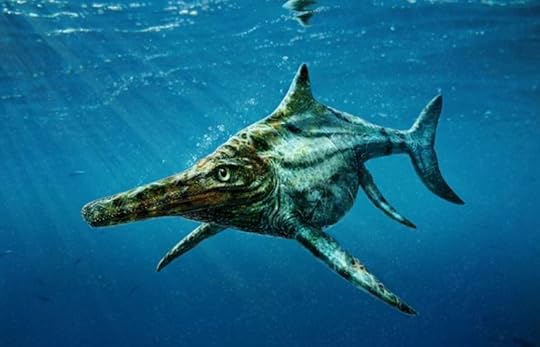 Sightings of her date back to the sixth century and even in modern times, a glimpse of her still makes waves around the world.
Sightings of her date back to the sixth century and even in modern times, a glimpse of her still makes waves around the world.
But it seems Nessie is not the first monster to grace Scottish waters after it emerged a long-lost relative may have been discovered.
This monster lived 170 million years ago, not in Loch Ness, but in a warm shallow sea around what is now the Isle of Skye and has been identified as a new species of ‘ichthyosaur,’ a large dolphin-like marine reptile that grew up to 14 feet long from snout to tail.
A team of palaeontologists – led by the University of Edinburgh and including a consortium of Scottish institutions – studied fossil fragments of skulls, teeth, vertebrae and an upper arm bone discovered on Skye in the past 50 years.
Several of the fossils came from ichthyosaurs, including one previously unknown species, named ‘Dearcmhara shawcrossi.’ Dearcmhara, pronounced ‘jarkvara’, is Scottish Gaelic for marine lizard.
The name shawcrossi was chosen in honour of amateur fossil hunter Brian Shawcross, who found the creature’s remains on Skye’s Bearreraig Bay in 1959.
Throughout the Jurassic Period, much of Skye was under water. At the time, it was joined to the rest of the UK and part of a large island positioned between landmasses that drifted apart to become Europe and North America.
Lead researcher Dr Steve Brusatte, from the University of Edinburgh’s School of Geosciences, said: ‘During the time of dinosaurs, the waters of Scotland were prowled by big reptiles the size of motor boats.
‘Their fossils are very rare, and only now, for the first time, we’ve found a new species that was uniquely Scottish.
‘Without the generosity of the collector who donated the bones to a museum instead of keeping them or selling them, we would have never known that this amazing animal existed. We are honoured to name the new species after Mr Shawcross and will do the same if any other collectors wish to donate new specimens.’ A description of the creature appears in a study in the Scottish Journal of Geology.
Skye is one of the few places in the world where fossils from the Middle Jurassic Period can be found and scientists believe discoveries made there could provide valuable insights into how marine reptiles evolved.
Dr Nick Fraser, from National Museums Scotland, said: ‘Not only is this a very special discovery, but it also marks the beginning of a major new collaboration involving some of the most eminent palaeontologists in Scotland.
Full story: Mail on Sunday
January 9, 2015
How some whales live more than 200 years
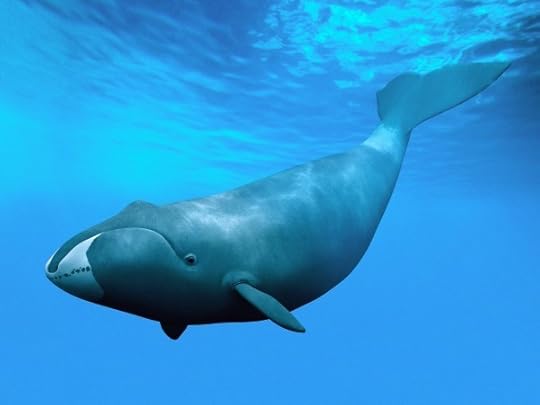 Bowhead whales (Balaena mysticetus), denizens of Arctic seas, are known to live more than 200 years, yet they show few signs of the age-related ailments that plague other animals, including humans. Even the bowhead’s closest cetacean relative, the much smaller minke whale, lives only 50 years. That suggests the larger whales (which have more than 1000 times as many cells as humans) have evolved some special natural mechanisms that protect them against cancer and aging. Now, in an effort to uncover the massive cetaceans’ longevity secrets, a team of scientists has mapped the bowhead’s genome. This is the first time that the genome of a large cetacean has been sequenced. The researchers compared the whale’s genome with that of nine mammals, including other cetaceans, cows, rats, and humans, they report online today in Cell Reports. Their comparative analysis uncovered mutations in two genes, one that is thought to confer resistance to cancer and is also linked to aging and DNA repair; the other is involved with DNA repair only. The scientists next intend to insert these genes into laboratory mice to see if they increase their longevity and resistance to disease.
Bowhead whales (Balaena mysticetus), denizens of Arctic seas, are known to live more than 200 years, yet they show few signs of the age-related ailments that plague other animals, including humans. Even the bowhead’s closest cetacean relative, the much smaller minke whale, lives only 50 years. That suggests the larger whales (which have more than 1000 times as many cells as humans) have evolved some special natural mechanisms that protect them against cancer and aging. Now, in an effort to uncover the massive cetaceans’ longevity secrets, a team of scientists has mapped the bowhead’s genome. This is the first time that the genome of a large cetacean has been sequenced. The researchers compared the whale’s genome with that of nine mammals, including other cetaceans, cows, rats, and humans, they report online today in Cell Reports. Their comparative analysis uncovered mutations in two genes, one that is thought to confer resistance to cancer and is also linked to aging and DNA repair; the other is involved with DNA repair only. The scientists next intend to insert these genes into laboratory mice to see if they increase their longevity and resistance to disease.
Source: Science
January 8, 2015
Dolphins and Humans Are More Similar Than You Realize
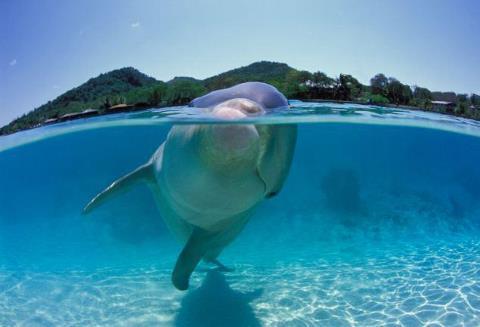 In 2013, India government classified dolphins as non-human persons with their own specific rights. Because of this declaration, keeping dolphins in captivity has been banned in India. The country was the first to do so in the world, causing many people to ask questions and learn more about dolphins. Many were confused about the title “non-human persons.” Does this mean dolphins are people? Well, no. Granting dolphins personhood just gives them the same protections that basic human rights allow us.
In 2013, India government classified dolphins as non-human persons with their own specific rights. Because of this declaration, keeping dolphins in captivity has been banned in India. The country was the first to do so in the world, causing many people to ask questions and learn more about dolphins. Many were confused about the title “non-human persons.” Does this mean dolphins are people? Well, no. Granting dolphins personhood just gives them the same protections that basic human rights allow us.
The Nonhuman Rights Project, an organization devoted to fighting for personhood rights for animals, explains that the goal of granting animals basic human rights is to”…change the common law status of at least some nonhuman animals from mere “things,” which lack the capacity to possess any legal right, to “persons,” who possess such fundamental rights as bodily integrity and bodily liberty, and those other legal rights to which evolving standards of morality, scientific discovery, and human experience entitle them.”
Organizations, like Nonhuman Rights Project and the Dolphin Project, are helping to bring attention to how close animals are to humans. Just last month, Argentina recognized an orangutan as a “non-human person” and granted her freedom. Following India’s ruling, Malibu, California and Romania have adopted the same law for dolphins.
These bans and rulings are in place because once you learn about these animals, you realize how much we have in common with them. Here are a few of those reasons:
1. We are Social Animals
Like us, dolphins have families, as well as social groups. You know, those people you never get tired of seeing. We may refer to it as our clique, but there is a scientific terms for these groups of dolphins. Called “pods,” dolphins travel in groups of diverse numbers. Like us, they could have as little as two individuals in their group or a pod could reach up to 1,000 individuals.
2. We Speak in Different Dialects
Depending on their pod and geographical area, orcas (which are actually not whales, they’re the largest classified dolphin) can “speak” in different dialects. You can compare this the accents we have across the world: American, British, Australian, Irish and so on. This happens the same way it happens to us: our environment and learned behavior from our superiors. There is even evidence that orcas and bottlenose dolphins can learn each other’s languages, the same way we learn other languages – but they do it all without Rosetta Stone.
3. We Give Each Other Names
Dolphins may not be calling out for “Susie” or “Bob” in the ocean, but studies have shown that they do have for members of their pod.
4. We Have Sex for Pleasure
There are few mammals that engage in sex while the female is not ovulating. Bonobos (pygmy chimps) are one of these, and so are dolphins and humans.
5. We Have Various Sexual Identities
In an Australian-based study, scientists followed 120 dolphins for five years to take a closer look at dolphins’ social lives. They found that there are homosexual and bisexual relationships within the groups, with these relationships mainly happening between male dolphins.
6. Our Brains Are Very Similar
For her PhD thesis, scientist Lori Marino compared the skulls of dolphins and toothed whales to apes. She found that in terms of size relative to body, dolphins have larger brains. In fact, they come in second for largest brain relative to body size, right below humans. But it’s not the size of the brain, it’s what you can do with it. And dolphins are capable of some pretty complex things relative to their brain. In studies, it has been found that dolphins are in fact better at communication than humans. With their ability to produce and receive sounds, dolphins are capable at sending and receiving information at 20 times the speed we can.
7. We Recognize Ourselves in Mirrors
There’s a difference between looking in a mirror and understanding what’s there. We’ve seen our dogs and cats study the mirror with confusion. Dolphins, on the other hand, know exactly what they’re looking at: themselves. Not only that, but they also recognize changes in their appearance, showing a complex form of self awareness.
8. We Have Very Similar Genetics
Throughout studies, geneticists have found that the human genome and the dolphin genome are basically the same. Texas A&M Scientist Dr. David Busbee explains, ”It’s just that there are a few chromosomal rearrangements that have changed the way the genetic material is put together.”
So Green Monsters, do you think that we’re really that different from dolphins?
Source: One Green Planet Article by Lindsay Patton
January 7, 2015
Rare Albino Dolphin Spotted off Coast of Florida, USA
Last month a volunteer with the Florida Fish and Wildlife Conservation Commission caught sight of something rarely seen: an albino bottlenose dolphin.
Danielle Carter observed the bright bottlenose off her state’s coastline in early December and was able to capture it on video, according to Florida Today.
The Florida Fish and Wildlife Conservation Commission posted the footage to Youtube (see below) but, in view of the dolphin’s safety, declined to disclose the exact place it was seen in the state’s waters.
In the video, the marine mammal breaks above the windswept waters several times, its whiteness jumping out sharply against the backdrop.
Carter’s spotting of an albino bottlenose dolphin would be just the 15th such sighting, Florida Today reports, while also noting that bottlenoses aren’t the only dolphins to exhibit albinism.
Source: Discovery.com
January 5, 2015
Underwater video of killer whales at play
Here’s a short clip from the Smithsonian Channel‘s series “Hunt for the Super Predator.” It shows an encounter a team of photographers and scientists had with killer whales at Bremer Canyon off the coast of Western Australia.
Using a special camera rig he designed, wildlife cameraman David Riggs shot some amazing underwater footage of killer whales that looks too good to be true (you can find it at 1:35 in the video).
The custom tow camera system captured killer whales chasing the boat and playing underwater. Apparently the footage is so amazing that many people are questioning whether it’s real. One viewer writes, “This is animation…… How can anyone with eyes think this is real footage? Just look at the movements of the orcas, this is as animated as it can get.”
Source: PetaPixel
December 30, 2014
Test your knowledge of dolphins
Dolphin Way Quiz
10 questions
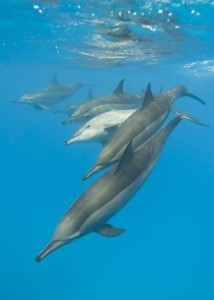
take quiz
As we come to the end of the year, try this light-hearted quiz to see how much you know about dolphins and the Dolphin Way
(Hint: you can find the answers on dolphin-way.com)
December 29, 2014
Supertrawlers to be banned permanently from Australian waters
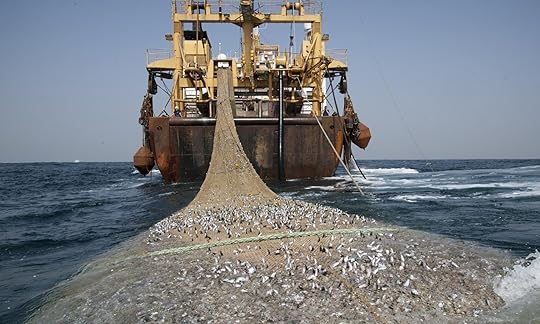 Supertrawlers will be permanently banned from Australian waters, the federal government announced on Wednesday.
Supertrawlers will be permanently banned from Australian waters, the federal government announced on Wednesday.
The move follows the temporary bans on supertrawlers imposed by the Labor government two years ago and re-endorsed by Tony Abbott in March. The first ban expired in November and the second was up for review in April.
The parliamentary secretary for agriculture, Richard Colbeck, said the government would stop vessels longer than 130m from fishing in Australian waters.
This definition of supertrawler does not take into account the processing capacity of a vessel, which proponents of the ban say is just as critical as the size of the vessel.
“This government will introduce regulations under the Fisheries Management Act to give effect to this decision,” Colbeck said in a statement released on Wednesday afternoon. “This decision will have policy effect immediately.”
Colbeck said the government “has consulted widely and accepts the legitimate concerns of many in the community, including those involved in recreational and commercial fishing”.
“The government is determined that Australian fisheries management remain among the best in the world,” the statement said.
Labor banned supertrawlers, or large freezer-factory vessels, after outcry from the public. The Stop the Supertrawler petition has nearly 63,000 signatures.
“Supertrawlers are large freezer-factory fishing trawlers that threaten our unique marine life and fisheries, and the recreational fishing, commercial fishing and tourism industries that rely on these,” the petition said.
“Supertrawlers are part of a global problem that has led to the devastation of the world’s fisheries, marine life and local livelihoods, and we don’t want that kind of fishing in Australia.”
Abbott addressed the House of Representatives in March, saying: “The supertrawler was banned from Australian waters … it was banned with the support of members on this side of the house. It was banned. It will stay banned.”
Source: The Guardian
December 28, 2014
Policy action urgently needed to protect Hawaii’s dolphins
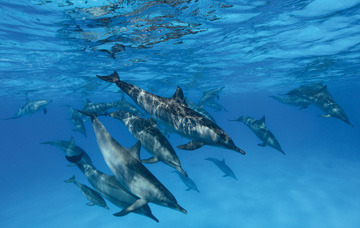 The best way to protect wild spinner dolphins in Hawaii while also maintaining the local tourism industry that depends on them is through a combination of federal regulations and community-based conservation measures, finds a new study from Duke University.
The best way to protect wild spinner dolphins in Hawaii while also maintaining the local tourism industry that depends on them is through a combination of federal regulations and community-based conservation measures, finds a new study from Duke University.
Each year, hundreds of thousands of tourists to Hawaii pay to have up-close encounters with the animals, swimming with them in shallow bays the dolphins use as safe havens for daytime rest. But as the number of tours increases, so do the pressures they place on the resting dolphins.
The Duke study says long-proposed federal regulations are urgently needed to limit daytime human access to these resting bays. But, it adds, a one-size-fits-all management approach will not work. Managing the bays should also include local community-based conservation measures, which can be tailored to how individual bays are used.
Together, these actions offer the best hope for protecting the dolphins while promoting the long-term sustainability of the local tourism industry, according to the study published this month in the Journal of Sustainable Tourism.
“Managing at the level of the bay, instead of focusing on the dolphins, has many advantages,” said Heather Heenehan, a doctoral candidate at the Duke University Marine Laboratory, who led the study. “Most importantly, it explicitly acknowledges that all users of these bays have the right to take advantage of the resources they offer — including dolphins, which are protected from harassment under federal law.”
The five-year interdisciplinary study focused on Makako Bay and Kealakekua Bay on the Kona coast of Hawaii Island. The team conducted detailed assessments of how each bay was used, and the ways in which different groups of users interacted with and affected the dolphins.
Using an approach pioneered by the late Nobel Prize-winning social scientist Elinor Ostrom, they also assessed each bay for its potential to support community-based conservation efforts. These involve local residents working together to sustainably manage the resting bays as common-pool resources and to discourage human behaviors that can harm the dolphins.
At times, team members observed as many as 13 boats and 60 people coming within 700 feet of a pod of resting spinner dolphins. In some cases, people grabbed the animals and rode them, or put their dogs in the water to chase the dolphins.
Results showed that while daytime activities such as fishing, kayaking, swimming, recreational boating and dolphin tours — all of which can disrupt dolphins — occurred in both locations, the activity in Makako Bay was much more dolphin-centric, whereas Kealakekua Bay was used for a broader range of purposes.
Complicating matters further, Kealakekua scored twice as high as Makako on the 10-point scale of factors developed by Ostrom to identify locations where community-based conservation can emerge.
“This shows that a combination of management approaches is needed immediately to make interactions between humans and dolphins sustainable,” said David Johnston, assistant professor of the practice of marine conservation ecology in Duke’s Nicholas School of the Environment. “Neither top-down mandates nor bottom-up stakeholder efforts are the sole answer to this problem.”
Full story: ScienceDaily



